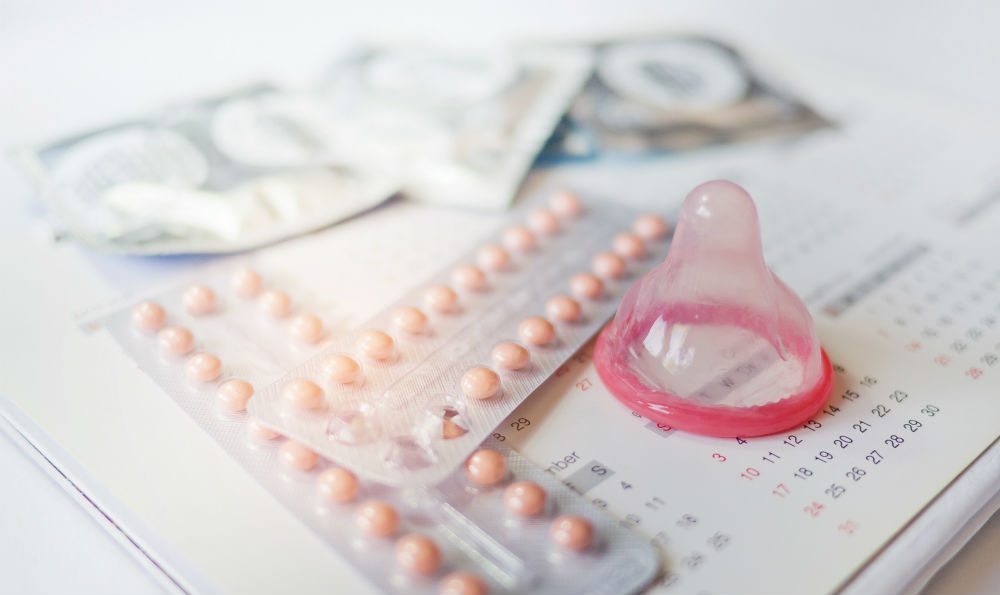Contraception—What Methods Are There?
25 October 2018
When it comes to birth control, our minds go first to the contraceptive pill and condoms. Yet these two options are repeatedly coming under fire, because women who take the pill are swallowing down hormones every day and many people find sex with a condom simply doesn’t feel natural enough. But what other alternatives of contraception are there, and how safe are they?
The contraceptive pill
One in two women are taking the pill to prevent a potential pregnancy. The pill tricks the body into thinking the egg has already been fertilised. This stops women from ovulating, preventing pregnancy. There are two types of contraceptive pill: the combined pill and the mini pill, or progestogen-only pill (POP). The difference between them is that the combined pill contains the hormones oestrogen and progestogen along with antiandrogens, and the mini pill only contains the hormone progestogen.
However, taking the contraceptive pill can increase the risk of thrombosis and lead to depression, and a low sex drive and weight gain are also attributed to the pill. Although it hasn’t been verified that the contraceptive pill can actually cause all of these problems, and very few women generally experience any problems as a result of the pill, women are increasingly turning their back on the pill and opting for alternative methods of contraception.
Alternatives that also contain hormones
For anyone who isn’t concerned about hormones but who doesn’t fancy having to remember to take a pill every day, there are a few alternatives to the pill which also use progestogen and oestrogen to provide the protection needed. These include the following birth control options:
- The vaginal ring: Unlike the pill, the so-called vaginal ring—often also called NuvaRing—does not need to be taken daily. Instead, it is inserted into the vagina once a month, in much the same way as you would insert a tampon. Women then wear the ring for 21 days and then remove it and have a seven-day break. Just like the pill. Once the seven days are up and your period has finished, a new NuvaRing is placed deep inside the vagina for a month. Like the pill, the vaginal ring also releases the hormones oestrogen and progestogen, thus preventing ovulation. However, a lower dose of hormones is released than with the pill, and a woman’s body is not affected as much by hormones. It has a Pearl Index of 0.4 to 0.65, which means between 4 and 7 women out of 1000 have become pregnant despite using the vaginal ring, which is a good figure for birth control.
- The three-monthly injection: As the name suggests, the three-monthly injection is injected into a woman’s upper arm every three months. It contains the hormone progestogen, which is gradually released over the course of three months, finding its way to the ovaries and the uterus and preventing ovulation. The Pearl Index for this method of contraception is 0.3 to 1.4, which is very good. It is therefore very safe, and this is due to the high concentration of hormones that women are injected with.
- The contraceptive patch: Contraceptive patches are applied to the skin, providing contraception in this way. The first patch is applied to the stomach, bottom or upper arm on the first day of the cycle. It stays there for seven days, until the next patch is applied on day eight of the cycle. Another new patch is then due on day 15, and this patch is removed on day 22 of the cycle and no patch is then worn for the next seven days. This is when you will have your monthly period. The patches also work thanks to the hormones oestrogen and progestogen and have a Pearl Index of 0.72 to 0.9.
- The hormone implant: Anyone who wants to be able to go a particularly long time without having to think about birth control may find the hormone implant worth considering. This is a small plastic rod, which is inserted under the skin and then provides contraceptive protection for three years. It is inserted on the inside of the upper arm. The active ingredient that provides the contraceptive effect is progestogen. It offers reliable contraception with a Pearl Index of 0 to 0.08.
- The intra-uterine system (IUS): Those who opt for the IUS, or hormone coil, are also those who prefer not to have to worry about contraception for a long time. These coils are fitted in the uterus by a doctor specialising in gynaecology and, once fitted, release a hormone into the lining of the uterus. An IUS is effective for three to five years and only releases the hormone locally in the uterus, not throughout the body. The hormone thickens the mucus in the cervix, making it more difficult for sperm to pass through, and inhibits sperm motility. It also keeps the uterine lining thinner than it would be without the coil fitted. As a result, any fertilised eggs are unable to implant in the lining of the uterus. The hormone coil has a Pearl Index of 0.16.

Hormone-free alternatives
Most women who turn their back on the pill do so because they want to steer clear of hormones. And there are, in fact, hormone-free alternatives to the pill:
- The intra-uterine device (IUD) or copper coil: Like the hormone coil, the copper coil is inserted into the uterus. It then releases small amounts of copper over five years, inhibiting sperm motility and preventing fertilisation of the egg, just like hormonal contraceptive methods. The IUD has a Pearl Index of 0.9 to 3.0.
- The frameless IUD: The frameless IUD—which consists of a small chain of copper beads—also owes its contraceptive effect to the copper in it and prevents eggs from being able to implant. It is inserted into the uterus and can remain there providing contraceptive protection for up to five years. The frameless IUD has a Pearl Index of 0.1 to 0.5.
- Diaphragms: A diaphragm is a dome made from silicone, which is inserted into the vagina and prevents sperm from reaching the egg. A spermicidal gel is also used with it. Diaphragms are inserted before sex and should then be left in the vagina for at least six to eight hours afterwards. This is because that’s how long sperm can continue to survive there. The Pearl Index for a diaphragm when used with spermicide is around 1 to 6.
- Condoms: Simply pull them over the penis and you have the protection you need. Unfortunately, condoms are often criticised for reducing sensitivity during sex. Men in particular aren’t keen on using condoms for contraception. Even so, condoms are still one of the most popular hormone-free birth-control methods. They have a Pearl Index of 2 to 12.
- Temperature measurement: This method involves using the basal body temperature to determine your fertile days. A woman’s body temperature changes by around half a degree during fertile days. It rises one day before ovulation. So when women can see when they are most fertile, they can avoid having sex in this precise window. Yet when it comes to birth control, relying solely on temperature measurements can be reckless. This is because having a cold can also make the body temperature increase. The Pearl Index is therefore between 0.3 and 9.
There are a few other reliable birth control options besides the pill, then. Women can speak to their doctor for more information about the various birth control options. In our next blog post, we look at what men can do when it comes to contraception.


